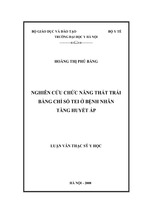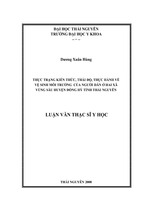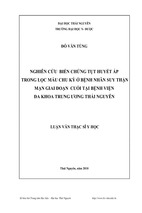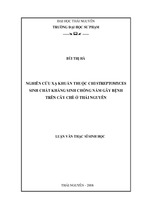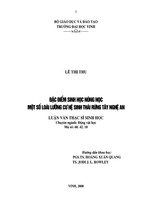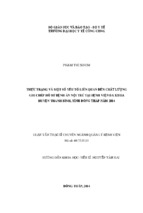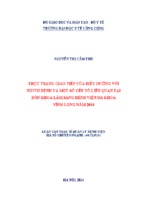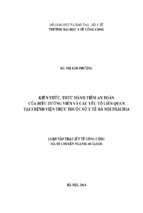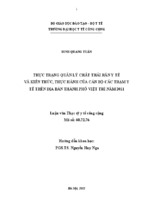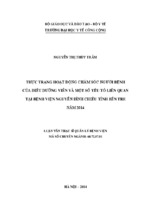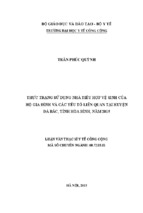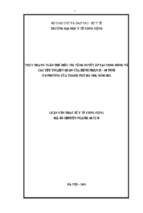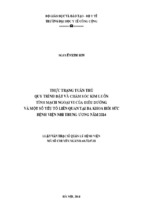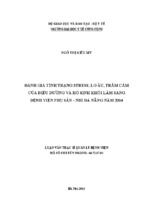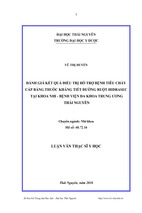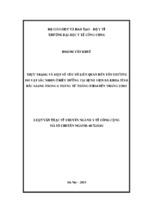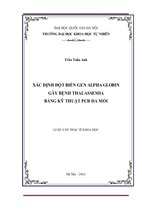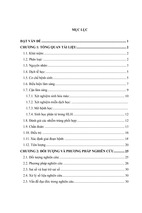Country Image Effects on Employer
Attractiveness
A thesis submitted in fulfilment of the requirements for the
degree of Doctor of Philosophy
Moulik M Zaveri
Master of Business Information Technology
School of Economics, Finance and Marketing, RMIT
August 2012
I
DECLARATION
I certify that except where due acknowledgement has been made, the work is
that of the author alone; the work has not been submitted previously, in whole
or in part, to qualify for any other academic award; the content of the thesis is
the result of work which has been carried out since the official commencement
date of the approved research program; any editorial work, paid or unpaid,
carried out by a third party is acknowledged; and, ethics procedures and
guidelines have been followed.
Moulik M. Zaveri
15/08/2012
I
DEDICATION
To the Almighty:
‘May the Almighty God illuminate our intellect to lead us along the righteous
path.’
To my Mother and Father:
A debt of gratefulness I owe you: a debt I can never repay.
ii
ACKNOWLEDGEMENTS
Many people have professionally and personally supported me during my
candidature to make this thesis come to reality.
Professional Acknowledgement
I offer genuine gratitude and thanks to my supervisors for their tireless support.
First of all, I would like to thank my principal supervisor, Dr Rajendra Mulye. I
feel very fortunate to have his support on many levels from motivation to subject
matter and beyond. I would also like to thank my second supervisor, Professor
Tim Fry, for his continued support, guidance and expert comments on the
thesis. I thank Ms Prue Lamont and Ms Kalpana Lalji for their support on
administrative matters during my candidature.
I thank Ian Searle and Professor R K Srivastava for their committed efforts and
assistance in data collection. I extend my thanks to Gaurangi Gandhi for
administering surveys in Australia on my behalf.
I also owe a great deal of gratitude to my colleagues, friends and students at
RMIT Vietnam. Many thanks are extended to Professor Merilyn Liddell,
Professor Julian Teicher and Mr Christopher Munro for their support and
encouragement. I would like to express my thanks to RMIT Vietnam for
providing opportunities to present my research papers at conferences. I thank
my colleagues in the Marketing Program team including Melvin Fernando and
Pakawat Kietisaksopon. I also extend my thanks to Matthew Cowan for his
support in the pilot study. I am thankful to Mark Jones for reviewing the earlier
drafts of the thesis.
Personal Acknowledgment
My genuine thanks go to my Mother, Father and Brother; they have been a
source of inspiration, enthusiasm, encouragement and the reason for who I am
today. Thank you a thousand times and over!
iii
Two of my friends have played a very important role in making this candidature
less overwhelming. I am grateful to Maulik Joshi for his unwavering support
during the thick and thin of this journey. I thank Smitha Lobo for her support and
inspiration. A big thank you also goes to my darts team for being understanding
and accommodative of my absences on match nights and being the source of
entertaining breaks during this journey.
iv
ABSTRACT
A recent trend is changing the global business environment. An increasing
number of emerging market multinationals (EMMs) based in developing
countries are expanding their businesses in the developed economies. This
trend has opened up new research areas because there is little or no research
available on the country-level factors that affect recruitment initiatives. It is
imperative for companies to accurately assess how the image of their country of
origin is perceived for recruitment purposes because human resources are a
source of competitive advantage. This thesis investigates this new avenue of
research by drawing on the literature on marketing and management to
understand country image effects on attractiveness to potential employees.
The purpose of the thesis is three-fold. The first aim is to thoroughly review the
extant literature in marketing and management and to prioritise key findings on
country image effects and the main determinants of employer attractiveness.
The second aim is to develop and test the conceptual model comprising these
key determinants. The third aim is to make a theoretical contribution to this new
area of research and to provide implications for organisations in their
recruitment marketing strategies locally and globally.
To achieve these aims, first, the country-level factors that impact on jobseekers’
evaluation of companies for employment purposes are identified. The key
findings related to country image literature are categorised to construct a
conceptual model comprising previously identified and new determinants of
employer attractiveness. The existing literature on recruitment has largely
focused on the factors at job and organisation levels that attract jobseekers.
Three new constructs – country image, jobseeker ethnocentrism and industry
expertise – are included in the model. The last two constructs are theorised and
introduced with measurement scales for the first time in this thesis. These
measurements scales are validated in the main study by using two new
datasets.
v
The main research findings are that two country-level factors – country image
and industry expertise – are the key predictors of employer attractiveness. The
country image also influences evaluation at job and organisation levels. Further,
jobseekers in developed and developing countries show a higher preference for
EMMs from countries which have industry expertise. This thesis identifies the
significant effects of country-level factors on employer attractiveness. These
determinants have never been researched before. By theorising and introducing
two new constructs with measurement scales, the thesis also increases our
understanding of the elements used by jobseekers in the evaluation of local and
foreign employers. The cross-national investigation provides results which have
high validity and generalisability.
vi
PAPERS
The following papers have been produced from the research reported in this
thesis:
Zaveri, MM, Mulye, R & White, C 2008, 'Country of origin effect on job choice
decisions', paper presented to Australia and New Zealand Marketing
Academy Conference, Sydney.
Zaveri, MM & Mulye, R 2010, 'Country of Origin Effect and Employer
Attractiveness: A missing link.' paper presented to Australia and New
Zealand Marketing Academy, Christchurch.
vii
CONTENTS
DECLARATION ................................................................................................... I
DEDICATION ..................................................................................................... II
ACKNOWLEDGEMENTS.................................................................................. III
ABSTRACT ........................................................................................................ V
PAPERS ........................................................................................................... VII
CONTENTS..................................................................................................... VIII
FIGURES AND TABLES .................................................................................. XII
CHAPTER 1: INTRODUCTION .......................................................................... 1
1.1
Research Context ..................................................................................... 1
1.2
Research Focus ....................................................................................... 5
1.3
Research Problem and Research Questions ........................................... 8
1.3.1
Research Questions ....................................................................... 8
1.4
Significance of the Research .................................................................... 9
1.5
Outline of Research Methodology .......................................................... 11
1.6
Definitions .............................................................................................. 11
1.7
Structure of the Thesis ........................................................................... 12
1.8
Summary ................................................................................................ 14
CHAPTER 2: LITERATURE REVIEW .............................................................. 15
2.1
Introduction ............................................................................................. 15
2.2
Country of Origin Effects in Marketing Literature .................................... 15
2.3
2.2.1
CoO as a Single Cue .................................................................... 16
2.2.2
CoO with Multiple Cues ................................................................ 17
2.2.3
CoO Effects on Hybrid Origins ...................................................... 22
2.2.4
Theoretical Models ....................................................................... 27
2.2.5
Country Image .............................................................................. 34
2.2.6
Consumer Ethnocentrism ............................................................. 50
Country of Origin Effects in HRM Literature ........................................... 61
2.3.1
CoO and Management Practices .................................................. 62
2.3.2
Ethnocentrism in HRM .................................................................. 66
viii
2.3.3
Job and Organisation Factors in Employer Attractiveness ........... 71
CHAPTER 3: THE CONCEPTUAL MODEL ..................................................... 76
3.1
Introduction ............................................................................................. 76
3.2
Theoretical Foundation ........................................................................... 78
3.3
3.2.1
Social Identity Theory ................................................................... 78
3.2.2
Halo and Summary Constructs ..................................................... 83
3.2.3
Instrumental and Symbolic Framework ......................................... 85
The Conceptual Model ........................................................................... 86
3.3.2
Jobseeker Ethnocentrism � Country Image � Employer
Attractiveness ............................................................................................ 89
3.3.3
Country Image � Employer Attractiveness .................................. 90
3.3.4
Industry Expertise � Employer Attractiveness ............................. 93
3.3.5
Industry Expertise � Country Image � Employer Attractiveness 95
3.3.6
Job and Organisation Factors � Employer Attractiveness ........... 95
3.3.7
Job and Organisation Factors � Country image � Employer
Attractiveness ............................................................................................ 96
3.4
Summary ................................................................................................ 98
CHAPTER 4: PILOT STUDY ............................................................................ 99
4.1
Introduction ............................................................................................. 99
4.2
Generate Sample Items ........................................................................ 100
4.3
Pilot Questionnaire ............................................................................... 102
4.4
Sampling .............................................................................................. 103
4.5
Preliminary Data Analysis ..................................................................... 104
4.6:
Reliability Analysis of the Measurements ............................................. 105
4.7
Factor Analysis ..................................................................................... 107
4.7.1
Jobseeker Ethnocentrism Scale Development ........................... 109
4.7.2
Industry Expertise Scale Development ....................................... 112
4.8
Countries and Their Levels of IT Industry Expertise ............................. 113
4.9
Summary .............................................................................................. 115
CHAPTER 5: RESEARCH METHODOLOGY ................................................ 116
5.1
Introduction ........................................................................................... 116
5.2
Research Design .................................................................................. 116
ix
5.3
Sampling .............................................................................................. 118
5.4
Potential Study Biases.......................................................................... 120
5.5
Conceptual and Operational Definitions ............................................... 121
5.6
Measurements ...................................................................................... 122
5.7
Questionnaire Testing .......................................................................... 126
5.8
Hypotheses........................................................................................... 126
5.9
Statistical Techniques Used for Data Analysis ..................................... 128
5.9.1
Independent Samples t Tests ..................................................... 128
5.9.2
ANOVA and MANOVA................................................................ 129
5.9.3
Regressions ................................................................................ 130
5.10
Ethical Issues .................................................................................... 131
CHAPTER 6: DATA ANALYSIS ..................................................................... 133
6.1
Introduction ........................................................................................... 133
6.2
Preliminary Data Analysis ..................................................................... 133
6.3
6.2.1
Characteristics of the Samples .................................................. 134
6.2.2
Reliability Analysis of the Measurements ................................... 135
6.2.3
Testing the Mean Differences ..................................................... 139
Interaction Effects ................................................................................. 146
6.3.1
6.4
6.5
Country Image and Job and Organisation Factors ..................... 149
Direct Effects ........................................................................................ 152
6.4.1
Country Image � Employer Attractiveness ................................ 154
6.4.2
Industry Expertise � Employer Attractiveness ........................... 156
6.4.3
Jobseeker Ethnocentrism � Employer Attractiveness ............... 157
6.4.4
Job and Organisation Factors � Employer Attractiveness ......... 158
6.4.5
Summary of Direct Effects .......................................................... 160
Indirect Effects ...................................................................................... 161
6.5.1
The Mediating Relationship of Industry Expertise on Country Image
and Employer Attractiveness ................................................................... 162
6.5.2
The Mediating Relationship of Country Image on Job and
Organisation Factors for Employer Attractiveness ................................... 165
6.5.3
6.6
Summary of Indirect Effects ........................................................ 168
Summary of the Data Analysis Results ................................................ 169
x
CHAPTER 7: SUMMARY AND CONCLUSIONS ........................................... 171
7.1
Introduction ........................................................................................... 171
7.2
Direct Effect Hypotheses ...................................................................... 174
7.3
7.2.1
Country Image � Employer Attractiveness ................................ 174
7.2.2
Industry Expertise � Employer Attractiveness ........................... 175
7.2.3
Jobseeker Ethnocentrism � Employer Attractiveness ............... 177
7.2.4
Job and Organisation Factors � Employer Attractiveness ......... 178
Indirect Effect Hypotheses .................................................................... 180
7.3.1
Country Image � Industry Expertise � Employer Attractiveness
180
7.3.2
Industry Expertise � Country Image � Employer Attractiveness
181
7.3.3
Country Image � Job And Organisation Factors � Employer
Attractiveness .......................................................................................... 182
7.4
Interaction Effects ................................................................................. 183
7.5
Theoretical Implications ........................................................................ 185
7.6
Managerial Implications ........................................................................ 189
7.7
Limitations and Future Research Directions ......................................... 191
REFERENCES ............................................................................................... 195
APPENDIX 1: PILOT STUDY ......................................................................... 216
APPENDIX 2: MAIN STUDY .......................................................................... 240
xi
FIGURES AND TABLES
Figures
Figure 3.1: The conceptual model of country image effects on
employer attractiveness
92
Figure 5.1: Country of origin and job location matrix
122
Figure 5.2: Advertisement of job description of the quasi-experimental
design with 2x2 treatments
123
Figure 6.1: Country of origin of employer and location of job
161
Figure 7.1: Hypothesised and confirmed preferences of Australian
jobseekers based on CoO of employer and location of job
for employer attractiveness
189
Figure 7.2: Preferences of Indian jobseekers based on CoO of
employer and location of job for employer attractiveness
189
Tables
Table 4.1: Items removed from the pool based on feedback from
expert judges
106
Table 4.2: Countries evaluated for their expertise in the IT industry
107
Table 4.3: Characteristics of the respondents
109
Table 4.4: Reliability of jobseeker ethnocentrism using Cronbach’s
alpha
110
Table 4.5: Reliability of industry expertise using Cronbach’s alpha
112
Table 4.6: Preliminary factor analysis of jobseeker ethnocentrism
questionnaire
115
Table 4.7: Varimax rotated factor structure of the 13-item jobseeker
ethnocentrism scale
116
Table 4.8: Varimax rotated factor structure of the four-item IT industry
expertise questionnaire
118
Table 4.9: Means and standard deviations of countries on their
perception of global expertise in the IT industry
119
Table 5.1: Conceptual and operational definitions of the independent
and dependent variables examined in the thesis
126
xii
Table 5.2: Hypotheses indicating direct, indirect and interaction
effects among the variables of the thesis
132
Table 6.1: Characteristics of the Australian and Indian samples
139
Table 6.2: Reliability of measures in Australia and India using
Cronbach’s alpha
141
Table 6.3: Mean and standard deviations of four quadrants by two
nationalities
152
Table 6.4: Unstandardised (B) and standardised regression
coefficients and squared semi-partial (or ‘part’) correlations
(sr2) of independent variables on employer attractiveness
160
Table 6.5: Regressions evaluating possible mediators of the
relationship between the independent variables and
employer attractiveness
168
Table 7.1: Results of the hypotheses testing
178
xiii
CHAPTER 1: INTRODUCTION
1.1
Research Context
Traditional marketing philosophies have primarily focused on marketing
products to consumers. This has usually involved understanding a company’s
consumers and making the company more resilient in the face of competition
and other market forces. This focus on external parties has also been found to
be beneficial in other spheres of a company’s operations such as in improving
internal cooperation between departments through internal marketing (Berthon,
Ewing & Hah 2005), improving external relationships with suppliers (Wiedmann
2006), investors (Lee, RP & Chen 2006), employees (Ambler & Barrow 1996)
and, more recently, prospective employees (Ewing et al. 2002). This last
aspect, the adoption of marketing principles to promote employment value
proposition to prospective employees, is the focus of this thesis.
Researchers in this area have proposed that just as consumers are influenced
by cues in their purchases of consumer products, they are also influenced by
cues of employers in their decision on which employer to work for. Researchers
have found that employers can attract jobseekers by employer branding
(Backhaus & Tikoo 2004), brand personality (Lievens & Highhouse 2003),
brand equity (Cable & Turban 2003; Collins & Stevens 2002) and the corporate
reputation of the organisation (Collins & Han 2004). These studies have
suggested that the marketing problem of inducing people to buy a product is not
very different from inducing them to join an organisation as employees.
Examples of marketing campaigns to enhance employer attractiveness are: ‘I
want you for the US army’; the graduate recruitment campaign by Accenture,
portraying Tiger Woods with the caption ‘Focusing to meet the next challenge.
Just another day at the office for a Tiger. What’s your typical working day?’; and
Apple’s recruitment advertisement with the caption ‘Close Your Windows, Open
a Few Doors’.
Increasingly, firms are using marketing strategies to attract recruits and they
appear to be spending considerable resources on becoming an ‘employer of
1
choice’ or ‘employer brand’. The growing body of knowledge suggests that
human resources are seen as a source of competitive advantage in today’s
competitive global market. Berthon et al. (2005, p. 167) claim that ‘there is a
possibility that, in future, competition for the best employees will be as fierce as
competition for customers’. Recruiting skilful employees thus becomes a vital
process in achieving competitive advantage. The embedded question within this
process is: what are the factors that attract jobseekers to an organisation?
Earlier studies in human resources management (HRM) have addressed this
question by examining job- and organisation-level factors that attract jobseekers
to an organisation (for e.g., Chapman et al. 2005; Harris & Fink 1987). Job
factors are objective elements such as salaries, fringe benefits, job titles and job
security. Organisation factors on the other hand are the elements that are
inherent in the workplace and are difficult to evaluate before joining an
organisation, such as sociable colleagues, a job that fits the employee’s lifestyle
and the working environment. These factors together are found to increase
employer attractiveness. This finding is similar to findings in marketing (for e.g.,
Dodds 1991; Kardes et al. 2004; Lee, M & Lou 1996; Lin, L & Sternquist 1994),
which have shown that consumers use both, intrinsic and extrinsic
characteristics in product evaluation. The intrinsic characteristics of a product
such as quality, performance and satisfaction are difficult to evaluate without
using the product. On the other hand, extrinsic characteristics such as price,
packaging, warranty, and country of origin are external to the product. As with
any research field, once the basic factors of a phenomenon are clearly
explained, the research progresses in refining the factors that explain the
attitudes and behaviour of people. A similar pattern to consumer literature is
observed in recruitment literature. In consumer literature, scholars have begun
exploring above-the-basic factors to explain consumers’ attitudes to product
choice, considering, for example, the image of a product’s country of origin,
brand origin, brand personality and industry expertise. In recruitment literature,
scholars have found that job choice decisions are influenced by brand equity,
employer branding and corporate reputation. Country-level factors, however,
have not been well researched in terms of their effect on employer
attractiveness.
2
While research on job and organisation level factors has stood the test of time
in explaining employer attractiveness, the current trends in globalisation require
a more comprehensive framework to understand the choices made by
jobseekers. Trends in global business are changing and the collective world
view is widening. Forces in the East – China, India and the Middle East – are
having a huge impact on global business. Many products that people buy today
are made in China, and many of the call centres and back-office facilities of
Western businesses are in India. While labour-intensive economies still exist, a
paradigm
shift
is
occurring
simultaneously
where
emerging
market
multinationals (EMMs) in developing countries are expanding their businesses
in developed Western countries. Many of the developed countries’ world brands
are being taken over by EMMs. In their expansion, the EMMs are beginning to
provide employment in the developed countries. Business news is increasingly
reporting this paradigm shift. For instance, the buy-out of the iconic Swedish
automobile brand Volvo by Chinese car manufacturers; the acquisition of the
British icon Jaguar by Tata, an Indian company; the personal computer division
of IBM being acquired by Lenovo of China for US$1.75 billion; European steel
giant Corus being taken over by the Indian company Tata Steel (BBC 2006);
and Scotch whisky group Whyte & Mackay being acquired by the Indian
company United Spirits (BusinessWeek 2009). Yet another example is
Mahindra REVA, an Indian automobile company that is considering setting up
an assembly unit in Australia to manufacture electric automobiles (The
Economic Times 2012).
This current trend in global business is being increasingly researched and
monitored, mostly by consulting firms and industry observers. For example,
KPMG (2008) reported that ‘US, UK and Germany are top acquisition targets for
emerging market companies; India, Russia and South Korea are the most
active emerging markets in acquisition’. Fan (2008) cited a study of the Boston
Consulting Group (BCG 2006) which found that 100 companies from emerging
economies had total assets of US$520 billion in the international market.
Further, a total of 70 companies from emerging economies appeared in the
Fortune Global 500 in 2007 and this number is predicted to increase to 100
within ten years. In an independent study conducted by Gartner (2008), it was
3
reported: ‘Indian IT's [information technology] top three (TCS, Infosys, Wipro)
becoming mega vendors likely to pass IBM, Accenture and EDS’. The rise of
emerging economies in developing countries has received the attention of world
media including Business Week and The Economist (2008), as well as the
attention of scholars. In their book Next Now: Trends for the Future, Salzman
and Matathia (2006) claim that China and India, collectively termed ‘Chinida’, is
poised to turn the United States into the Old World. Similar sentiments are
expressed by Peter Engardio (2007), the senior writer of Business Week, in his
book Chindia. Further, Popkin and Iyengar (2007) from Gartner Inc. suggest in
their book IT and the East that ‘Western high-tech firms are increasingly
sourcing their products’ assembly, and the innovation that drives those
products, from China and India. Meanwhile, indigenous Chinese and Indian
companies are creating intellectual property and innovations that will directly
challenge those same Western companies’.
This new trend in globalisation poses a new set of research challenges that are
yet to be investigated and theorised. While research in industry is progressing,
there is a lack of research in academia on this changing trend. This is an
important omission from the literature for four reasons.
•
First, this is a new phenomenon with a new set of challenges. The
majority of the research in marketing and HRM has been conducted
in Western countries, mainly in the US, the UK, Europe and Japan,
because traditionally these countries expanded business globally.
The findings from these countries may not be applicable to the
developing countries due to their different levels of economic
development and different cultural forces.
•
Second, developed and developing countries are stereotyped
differently by consumers on their technological advancement,
political stability, labour conditions and product qualities (Chattalas,
Kramer & Takada 2008; Lotz & Hu 2001; Papadopoulos & Heslop
2003; Usunier 2006; Verlegh 2001). These varying stereotypes could
influence how companies and products from developed and
developing countries are evaluated differently.
4
•
Third, now that EMMs are beginning to provide employment in
developed countries, systematic research is required to understand
how jobseekers evaluate these companies as employers. Many
questions are yet unanswered in the existing literature, for example:
(a) how intrinsic and extrinsic cues are used by jobseekers in
developed countries to evaluate these employers from developing
countries, (b) how important is the image of the country of an
employer in job choice decisions, (c) what role does the level of
economic development of an employer’s country play in employer
attractiveness, (d) what are the trade-offs considered by jobseekers
when choosing between employers from a developed and a
developing country, and (e) how important is the industry in which an
employer operates.
•
Fourth, with these changing trends, global factors such as country of
origin, country image and ethnocentrism are becoming increasingly
important for understanding consumer and jobseeker attitudes in a
global environment.
1.2
Research Focus
This thesis explores this changing trend in globalisation and provides theoretical
evidence to suggest answers to the above questions. Two countries were
chosen for the study – one from a developed economy, Australia, and one from
a developing economy, India. The reasons for choosing these two countries
are: (1) these two countries have signed a Memorandum of Understanding
(MoU) to establish stronger links in education, tourism, information technology,
manufacturing and biotechnology, (2) Australian states have invited Indian IT
companies to invest in Australia (State Government of Victoria 2008), (3) in
Victoria, an Australian state, eight leading Indian IT companies – Birlasoft,
iGate, Infosys, NIIT, Patni, Satyam, TCS and Wipro – provide employment to
over 2,000 Australians (State Government of Victoria 2008), and (4) Australia
telecommunications, banking and IT companies have made significant
investments and partnerships in India (State Government of Victoria 2008).
5
The thesis specifically examines how the image of a country impacts on its
organisation in recruiting employees overseas. In particular, it examines the role
played by the country of origin of an employer in a prospective employee’s
decision to take up a job offer. For instance, if a jobseeker were offered an
identical job by two companies that differ only in their country of origin, say, one
company is Indian owned and the other one is Australian, which company
would the jobseeker join? Most candidates in Australia would perhaps opt for
the Australian company over the Indian company, possibly because of the
different levels of economic development of the two countries. However, the
answer is not so obvious in the context of an industry in which the developing
country has the greater expertise. The choice between a global IT company
from India or a local Australian IT company is a choice between gaining worldclass experience in a company from a developing country and working for a
company from a developed country with little or no international recognition in
the IT field. The research focuses on this trade-off that many applicants are now
increasingly making.
Human resource literature is yet to address the issues raised by this change in
globalisation, but there is a substantial body of knowledge in international
consumer research built over a period of over 40 years that has looked at the
issue of how consumers evaluate products based on their place of manufacture.
This is broadly referred to as the country of origin (CoO) effect. In its simplest
form, the phenomenon occurs when consumers evaluate products based on
their ‘Made in...’ labels (Bilkey & Nes 1982). Research in this area has
confirmed that products from developed countries are rated higher in value for
money and satisfaction and lower in risk, whereas products from developing
countries are evaluated higher in risk and lower in quality and satisfaction
(Bandyopadhyay 2001; Batra et al. 2000; Choi 1992; Jin, Chansarkar & Kondap
2006; Khan & Bamber 2008; Kinra 2006; Wang, CL & Chen 2004). The
exception to this is when a country has gained a competitive advantage in
certain industries. Products of these industries are then evaluated higher
irrespective of the economic development of the associated country (Jaffe, ED
& Nebenzahl 2006; Papadopoulos & Heslop 2003). For example, Colombian
coffee is evaluated much higher than Columbian television sets; and Afghan
6
- Xem thêm -

